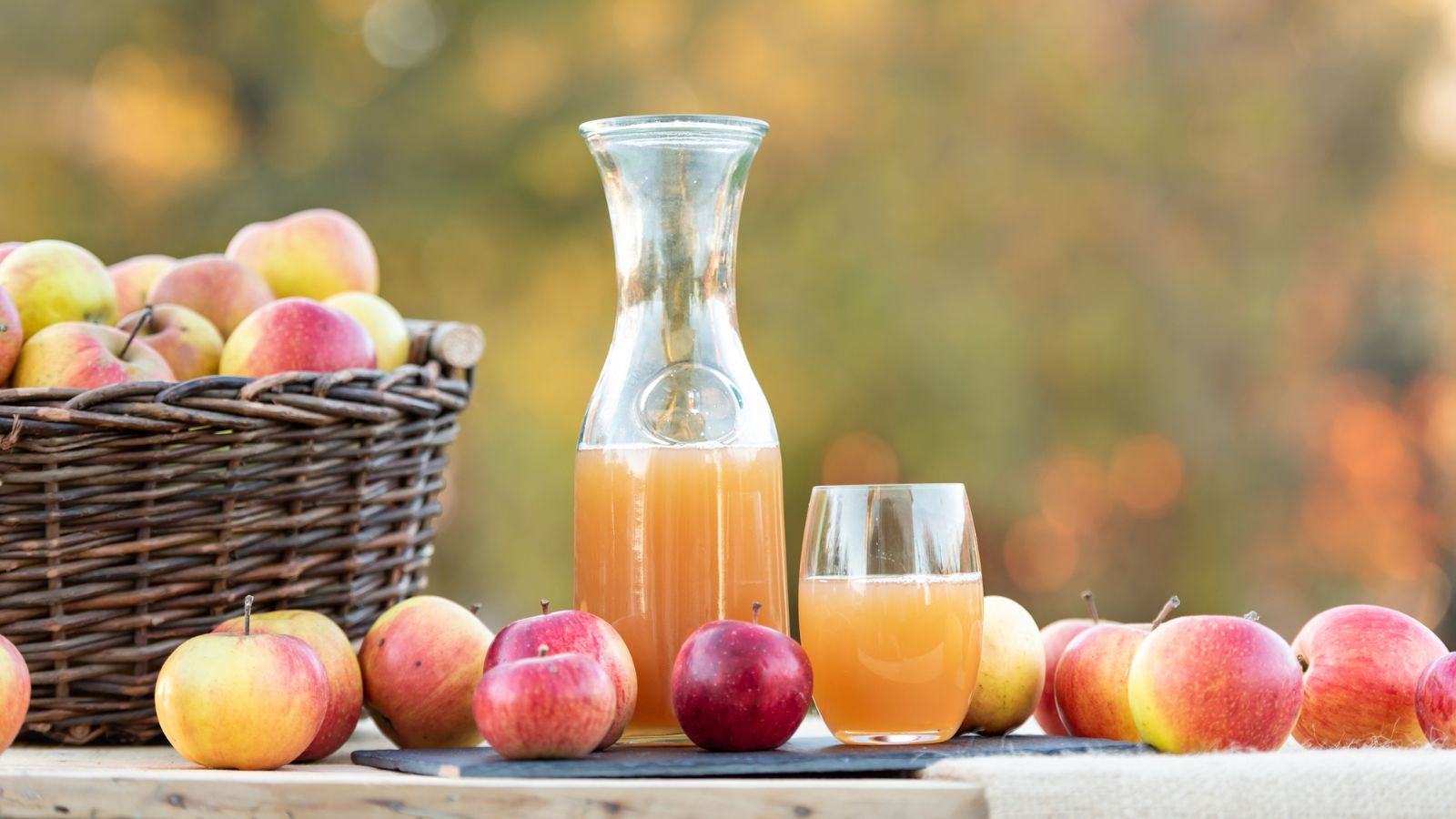
Since I got my own place, and started stocking my own fridge, I've really cracked down on food waste. I'm determined to make the most of my fresh produce. These days, I won't be put off by an overripe apple: I'll use it to make apple juice.
However, I don't have a juicer, so I've had to learn how to make apple juice with a blender. It sounds like it shouldn't work, but I've found that blender-made apple juice tastes better, feels cleaner, and comes cheaper than the store-bought stuff, though it might not sip as smoothly.
Ahead of my health kick in the new year, I want to perfect my juicing process. I've consulted home cooks and professional chefs, each of whom has offered their insights into the best way to make apple juice with a blender. From the equipment to the ingredients to the final product, these expert tips and tricks should guide you through each stage of the process.
How to make apple juice with a blender
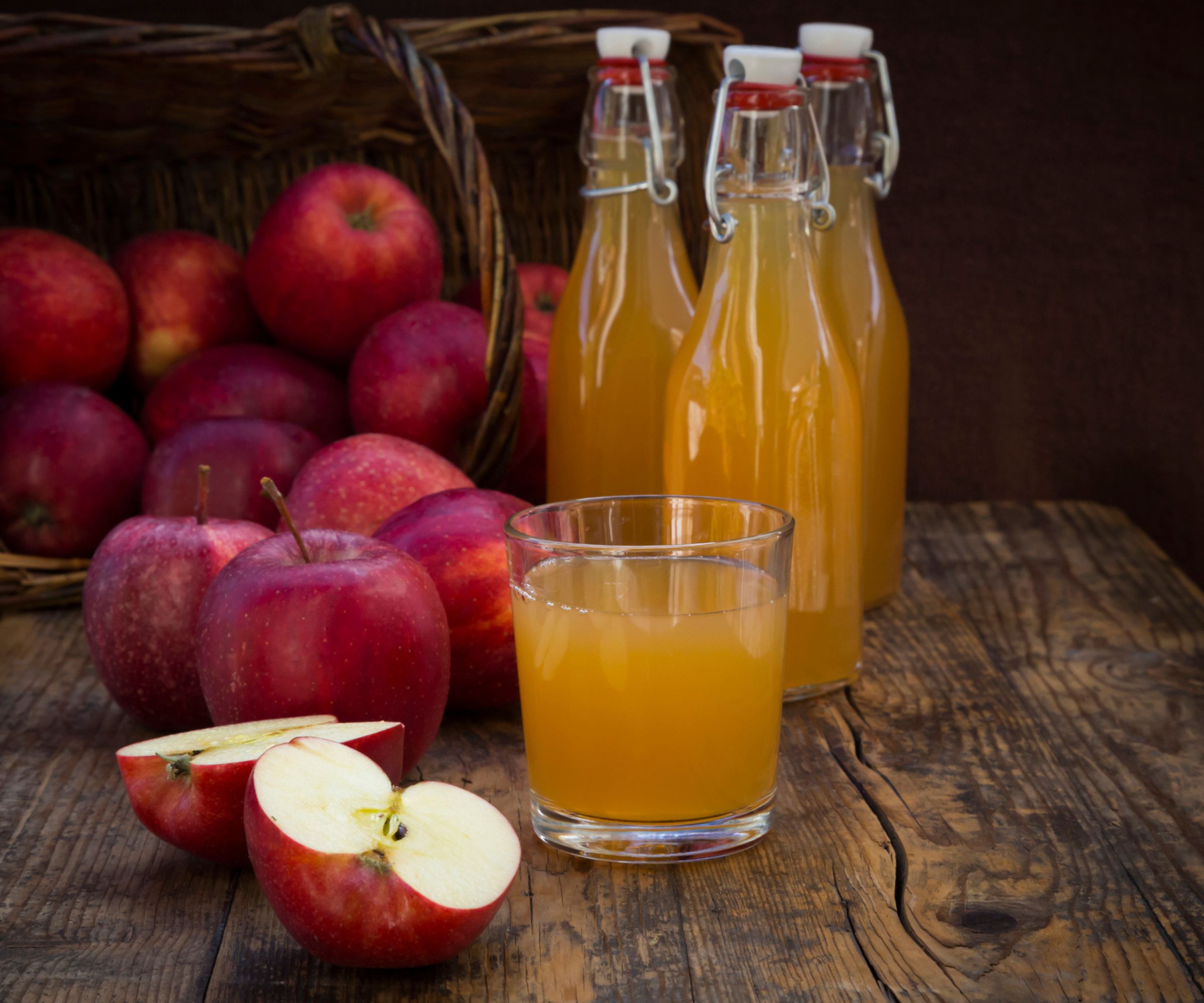
I recommend mixing a sweet apple with a tart one to create the most balanced flavor profile. I like to hand-pick my apples from the farmers' market, but you could always get them from the grocery store.
While there's no one way to make apple juice in a blender, I like to follow Anca Toderic's tried-and-true recipe. Anca is a former private chef turned recipe developer, who makes her own apple juice at least once a month. She starts by 'coring and chopping two to three apples into chunks'. Before you begin, you can peel your apples, but you don't need to. I like to keep the peel to boost my fiber intake.
Next, 'add your apples to your blender along with 1/4 to 1/2 cup water. Purée on high speed for one minute, or until the apple pieces are fully broken down and the mixture takes on a smooth, liquid consistency'. Many of the best blenders have a designated purée setting, but you should be able to monitor the consistency of your blend by eye.
According to Anca, 'straining your juice is optional, but it produces a clearer final product'. If you don't like pulp, and you want to make smooth-sipping juice, I'd recommend investing in a strainer. While you might not have one lying around, you can pick up a fine mesh sieve for less than $10 at Walmart. All you need to do is 'pass the blended juice through a fine mesh sieve or cheesecloth to separate out some of the pulp and solids. This should help to aerate and enhance the sweet apple aromatics'.
What are the benefits of making apple juice with a blender?
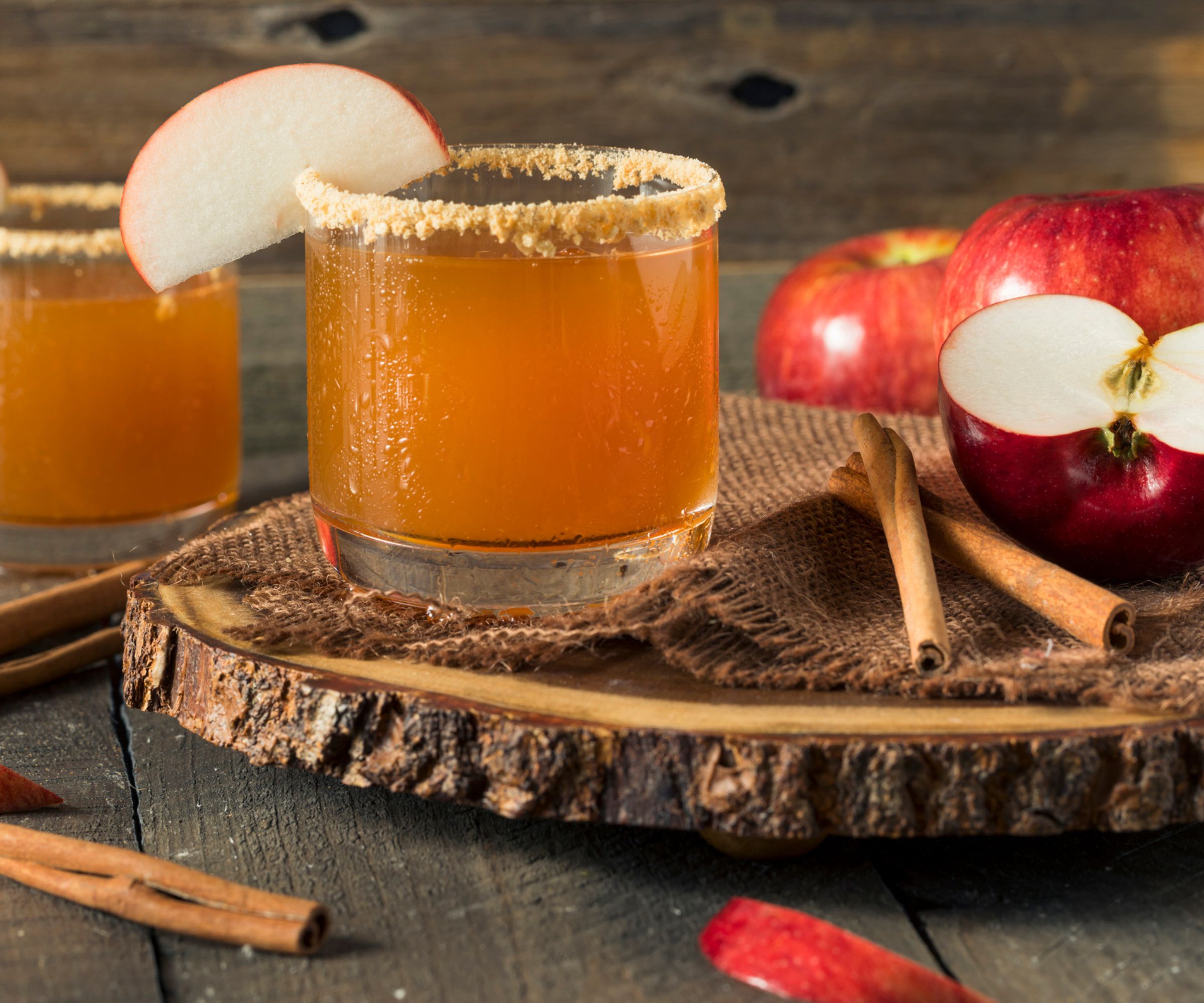
Fresh apple juice is often better for your body and kinder to your wallet, and it couldn't be easier to make. Even total blender beginners can chop and chunk and apple or two, add some water, and press 'purée'.
Food blogger Lauren Allen has been making her own apple juice for years. She finds 'it's cost-effective, since you just need apples and water as ingredients'. You might want to add a spoonful of honey or a splash of syrup for taste, though you likely already own these store cupboard essentials.
Homemade apple juice should come cheap, taste good, and boost your immune system. According to Lauren, 'you retain more of the apple nutrients, such as vitamin C and antioxidants, when you make fresh juice instead of buying the highly processed versions'. Fibrous apple peel is good for your gut, while antioxidants can improve your heart health.
If you're a clean eater or a control freak, you might enjoy making your own apple juice, since 'you get to control exactly what goes in'. Lauren likes to make apple juice at home so she can 'avoid any preservatives or added sugars often found in store-bought juices'.
How does homemade apple juice compare to store-bought?
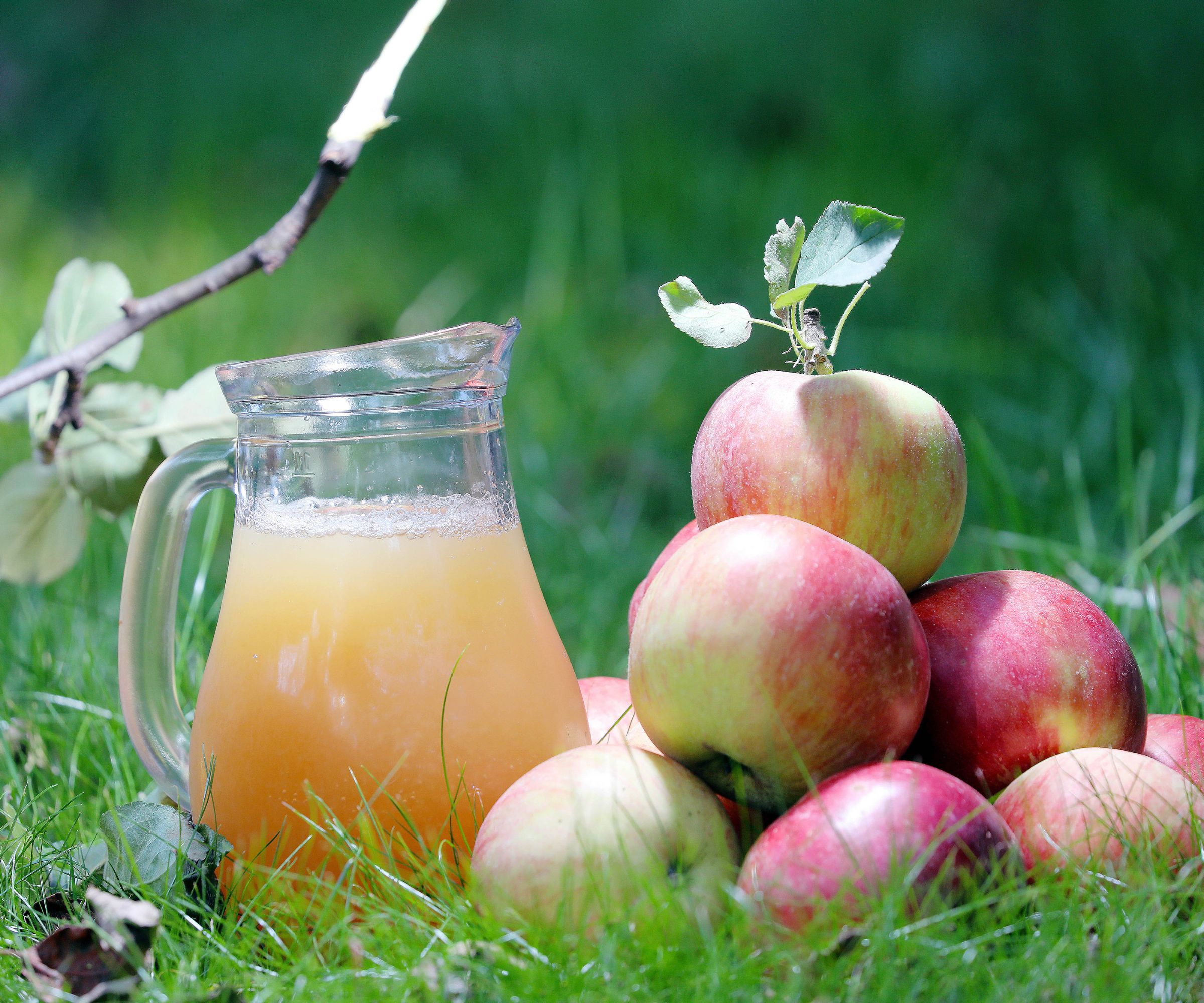
When it comes to homemade food and drink, you should consider the time, money, and effort involved in making it, but the most important aspect is the taste.
I think homemade apple juice from a blender tastes a whole lot better than store-bought. The experts agree, but you might struggle to distinguish between the two until you've tried. I asked Chef Amy Hand to differentiate between the types of juices, and the methods of juicing, to help you decide which sort of juice suits you.
According to Amy, 'homemade apple juice from a blender is thicker, with a more rustic feel. It's ideal for those who appreciate a natural unfiltered flavor. Store-bought apple juice is clearer and sweeter, but it often lacks the nuanced flavors of fresh apple juice, and contains added sugar'.
You might choose to make apple juice in a juicer, rather than a blender. Maybe you already own a juicer, or you have a serious aversion to pulp. If that sounds like you, Amy wants you to know that 'juicer-made apple juice is clearer and smoother than blender-made juice, but it might remove more of the beneficial fibers'.
But before you can pick your apples and get juicing, it's important to pick the right blender for the job. Which blender is best is partly a question of personal preference, but more of a matter of size: the larger the blender, and the more capacious the pitcher, the more juice you can make in a single cycle.
The best bullet blender could make a single serving of smooth-sipping apple juice, but you'd be hard pressed to produce more than a glass or two. If you want to make multiple servings of apple juice to drink now or save for later, you might appreciate a larger machine.
In order to make apple juice in a blender, you need a powerful motor that can blast through fruit skins, stems, and seeds. That way, you can incorporate the fiber and nutrients of apple peels and cores into your juice, without getting their grainy texture.
You might already have a blender at home that you could use to make apple juice. Just in case you don't, I've found a few of the best blenders that might whet your appetite. Each of these machines is tried and tested by a member of our expert team. You could use them to make soups, smoothies, sauces, and much more.
If you're shopping for the best blender money can buy, look no further: the Vitamix A3500 comes equipped with a 1500W motor to power through tough produce.
For buyers on a budget, I recommend the NutriBullet Smart Touch Blender. It's easy to use, easy to clean, and packs almost as much power as more premium blenders, for a fraction of the price.
If you don't just want to make juice, but soups, smoothies, and sauces, too, you'll appreciate this multifunctional machine. The Bluicer makes smooth-sipping juice and produces bone-dry pulp.
What are the downsides of making apple juice with a blender?
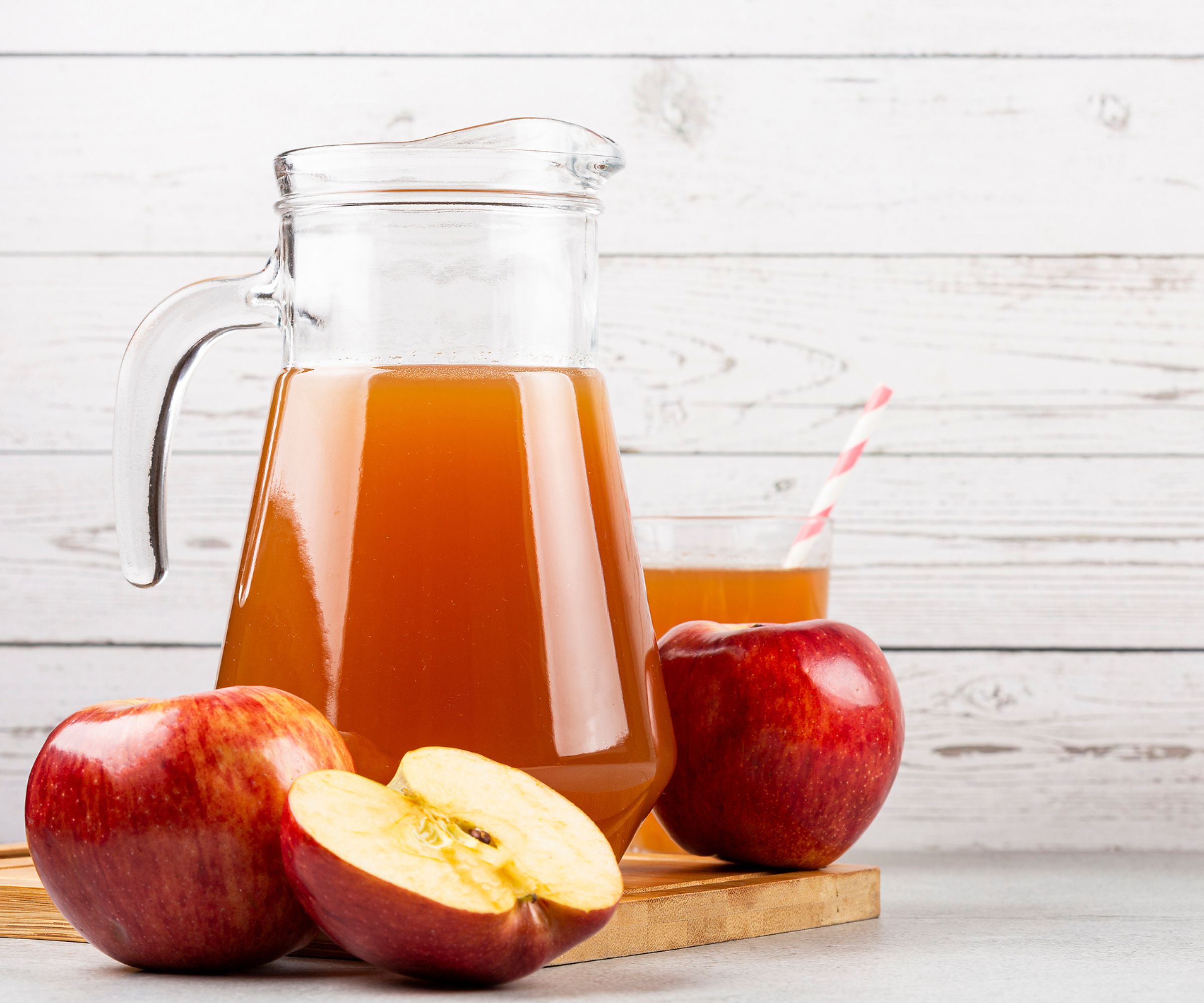
When you pick up a carton of apple juice from the grocery store, you might not stop to consider the time and effort that goes into making it. For every glass of juice you produce, you'll have to dispose of several apple cores, pips, and peels. You could throw your apple pips in the compost, or you could learn how to plant apple trees from seeds to make your own supply.
When you make your own apple juice, you can't just throw the carton in the trash – you'll need to wash and clean your blender. Not all blender attachments are dishwasher-safe, and it can be tricky to get between the blades to scoop out the last of that sauce, so I always recommend washing each part by hand. Hand-washing might not be a dealbreaker, but it is time-consuming, and could get old fast if you make apple juice each morning.
There's also the matter of taste. Chef Dennis Littley likes to make his own juice, but finds that 'the blender method tends to retain more fiber and pulp, resulting in a thicker and grainier texture. If you prefer a smoother juice,' Dennis recommends 'investing in a juicer'.
If you want to make all kinds of fruit juice, and you aren't that fussed about making smoothies, soups, and sauces, you might be better off with a juicer.
Where blenders blitz fruit and vegetables into thick and creamy purées, juicers press produce to extract the juice and leave behind the flesh and pulp. When you make apple juice in a juicer, you get a smoother consistency, though you might miss out on the fiber and nutrients contained in the apple pips and peel.
If you want to make multiple servings of apple juice to feed the whole family, Dennis would warn against using a blender: 'the blender method might not extract as much juice, leading to a slightly lower yield compared to a juicer'.
You don't need a juicer to make apple juice. With that said, if you have a serious aversion to pith and pulp, and you have some cash to spare, it might be a worthwhile investment. I've found a few of the best juicers to suit every style of kitchen and size of budget.
This juicer features an extra-wide feed chute to fit whole apples, so there's no need for chopping or chunking. A quick strain through a mesh sieve should remove any stalks and seeds.
If you want to make a lot of juice, fast, you'll get on well with the Breville Juice Fountain. This juicer features a 70-oz. pitcher to accommodate larger ingredients and make multiple servings.
The Nama J2 comes with an easy start guide and recipe book, as well as an illustrated instruction manual. It's the best juicer for beginners and packs enough punch to juice whole apples.
Can you make apple juice in a blender FAQs
Is homemade apple juice healthy?
Yes. When you make your own apple juice in a blender, you can keep in all the natural nutrients from pips and peels. Rich in fiber and antioxidants, homemade apple juice is better for your heart and your gut than the store-bought stuff. You can also omit the excess sugars, additives and preservatives commonly found in commercially-produced juice.
How long does homemade apple juice last?
When you make your own apple juice in a blender, it should last two to three days in the fridge before it begins to ferment. That's the downside of removing preservatives: homemade apple juice has a much shorter shelf life.
Our verdict
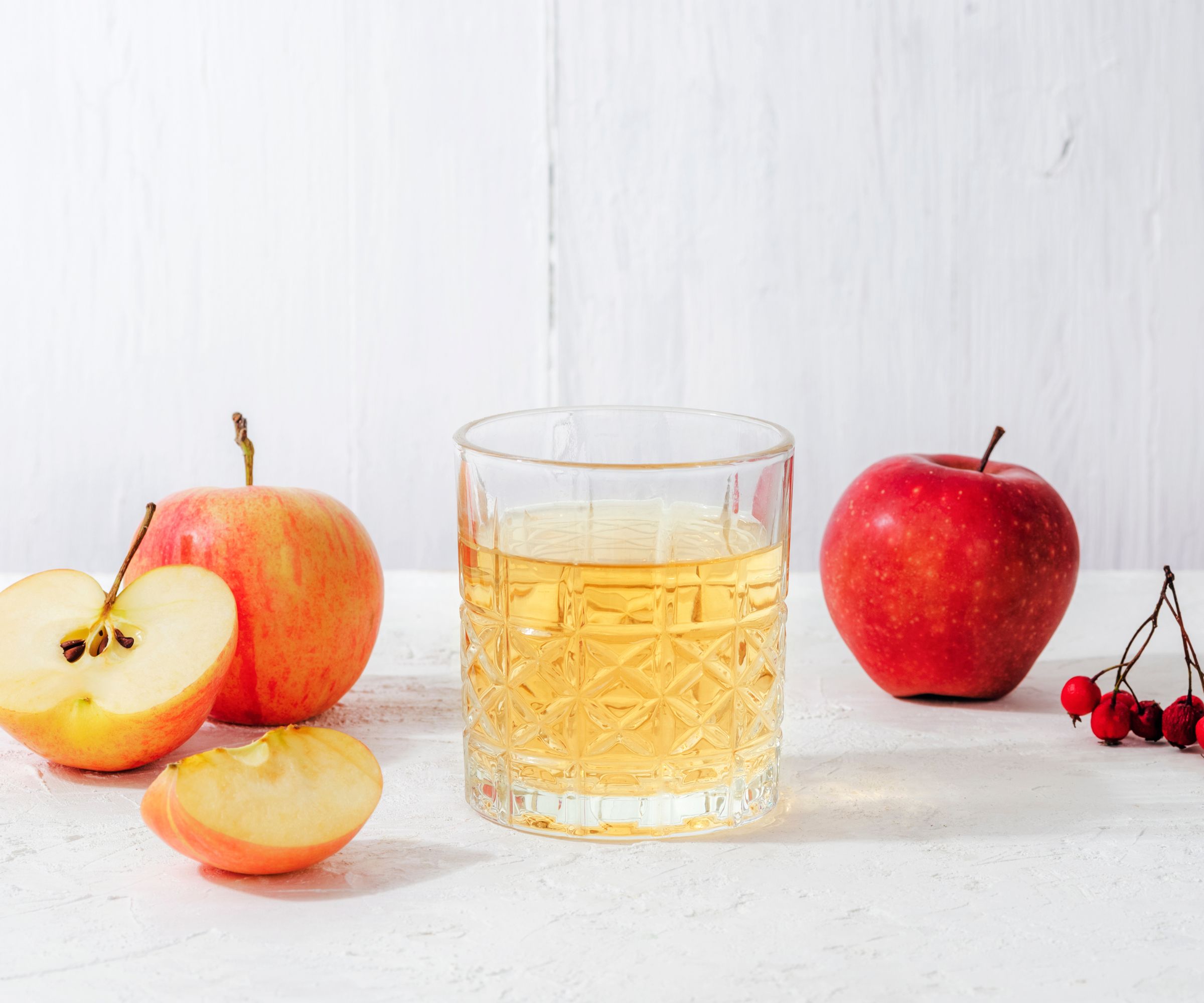
Accomplished cooks and beginner blenders alike can easily make apple juice in a blender. All you need to do is pick your produce, load your pitcher, and press 'purée'. Within minutes, you could make multiple servings of delicious, nutritious apple juice. While you might be able to make smoother juice in a dedicated juicer, I find it's quicker and more convenient to use my blender. You could always strain your juice through a fine mesh sieve or a cheesecloth for a cleaner, clearer consistency.







